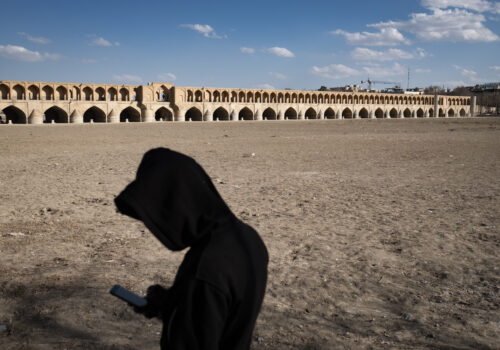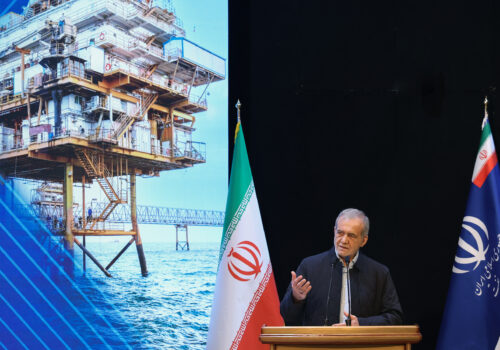Facing scarcity, the Gulf’s ‘smart water’ future lies in desalination
Aside from the ongoing geopolitical volatility, the Middle East and North Africa (MENA) region faces a twin policy challenge: acute water scarcity on one hand, and the imperative of economic diversification on the other. The region is the most water-stressed globally; sixteen of the world’s twenty-five most water-stressed countries are in the MENA, with Bahrain ranked first.
Notably, the Gulf Cooperation Council (GCC) states have extremely limited natural freshwater resources, leading to a heavy reliance on energy-intensive seawater desalination to meet their municipal and industrial water needs. At the same time, these hydrocarbon-exporting economies are pursuing strategies to reduce dependence on oil and gas revenues by developing high-tech industries, in line with national visions such as Saudi Arabia’s Vision 2030.
In the realm of feasible innovative solutions, integrating data centers with desalination facilities to create “regenerative data centers” stands out as a powerful approach to address both water security and economic diversification goals. Dual-purpose infrastructure like regenerative data centers that use waste heat or dedicated power to desalinate water offers a doubly advantageous solution for GCC countries aiming to address water security concerns while diversifying their economies.
SIGN UP FOR THIS WEEK IN THE MIDEAST NEWSLETTER
Water security and economic diversification
Water security is a critical issue in the Gulf. GCC countries now depend heavily on desalination for their drinking water, effectively bridging the gap between limited freshwater and increasing demand. Nearly half of the world’s desalinated water is produced in the Arabian Gulf region. For instance, Saudi Arabia alone produces more desalinated water than any other country—its capacity is expected to reach 8.5 million cubic meters per day by 2025 after investing $80 billion in new projects. Besides infrastructure costs, the Kingdom consumes about 300,000 barrels of oil daily to power its desalination plants.
Regarding the economic diversification axis, the volatility of oil markets and the global shift toward clean energy have prompted Gulf states to reinvest oil revenues into building knowledge-based, sustainable economies. A key element of diversification is the growth of information and communications technology (ICT) industries, including cloud services, artificial intelligence (AI), and data center infrastructure. PwC recently forecasted that the Middle East’s data center capacity will triple from about one gigawatt (GW) in 2025 to around 3.3 GW by 2030, marking one of the fastest growth rates worldwide. These projects also require advanced engineering, creating a need for skilled workers in mechanical, electrical, environmental, and information technology (IT) fields. Saudization and Emiratisation of the labor force are strong drivers that align particularly well with the need for a skilled labor force.
Saudi Arabia’s Vision 2030 exemplifies this shift: it explicitly aims for a technologically advanced, diversified economy with a vibrant digital sector. Technology plays a central role in Saudi Arabia’s diversification efforts, supported by over $300 billion in public investment in new industries, including advanced manufacturing, AI, biotechnology, space, and cloud computing.
What is a regenerative data center?
The idea of a “regenerative data center” was introduced by a Schneider Electric engineer in 2022 to describe a data center that is entirely self-sufficient in critical resources. In this model, a data center would produce its own renewable energy on-site (e.g., via solar farms or wind), recycle or reuse all waste materials, and replace all the water it uses through internal recycling or by producing new water through desalination.
By closing resource loops, such a facility would not drain external water supplies, despite heavy cooling demands, and could even become a net-positive infrastructure for the surrounding community by providing excess freshwater or energy. Incorporating a desalination unit into a data center’s design is a key innovation in this concept, particularly relevant for regions such as the Gulf.
Indeed, desalination-integrated data centers exemplify the high-tech, knowledge-intensive industries that Gulf states aim to develop. If even a small portion of the region’s data center capacity were to adopt heat-to-desalination technology, the total water output could reach hundreds of thousands of cubic meters per day, produced essentially for free using waste heat. This volume is roughly comparable to the output of a mid-sized desalination plant.
However, realizing this vision does not come without challenges. One major hurdle is technical integration. Marrying two complex systems—a data center and a desalination plant—requires careful and cutting-edge engineering.
Another challenge is economic viability and risk. Advanced projects, such as these, require a significant capital investment upfront. While it likely pays off over the long term through savings on fuel, water, and other expenses, the initial costs may be daunting. It will be important to demonstrate strong proof of concept, which is why the current pilot projects and first-generation implementations (like those in NEOM or Masdar) are so vital. If they can show good results, it will boost confidence for more projects.
The high energy requirement of such a facility can also pose a challenge, with the Gulf currently relying on hydrocarbons to power its desalination systems. Innovative clean energy solutions beyond solar and wind, such as small modular reactors (SMRs), have been gaining traction in the United States, with Amazon planning to use those to power its data centers in Washington State.
And from an environmental standpoint, even if these projects solve many problems, they won’t solve everything. Brine, the highly concentrated wastewater left over after freshwater is extracted, remains a significant challenge in desalination. For every liter of fresh water produced, a typical desalination plant may produce 1.5 liters of brine loaded with salt and chemicals that still need to be treated. The hope is to reach zero liquid discharge by extracting salts and minerals, as NEOM aims to do with a brine processing plant. To tackle this issue, the UAE also launched a “Rethink Brine” innovation challenge to find creative uses for brine and mitigate ecological harm.
Multi-effect distillation: A practical approach
One practical way for a data center to generate freshwater is by using its waste heat to power a thermal desalination process. Data centers convert nearly all their electrical energy into heat; large server farms consistently release heat that often reaches water temperatures of 40 to 60 degrees Celsius in liquid cooling loops or condenser circuits. Instead of releasing this heat into the air, it can be captured for useful purposes. In hot climates—such as the Gulf—where heating needs are low, desalination becomes an attractive option for utilizing waste heat.
Multi-effect distillation (MED) is particularly suitable for this purpose. MED is a thermal desalination technique where seawater is heated to produce vapor across several stages (effects) at progressively lower pressures, enabling efficient operation with relatively low-grade heat (often less than seventy degrees Celsius). Researchers highlight that MED “fits perfectly with data centers,” especially in hot regions, as it can serve as a cooling mechanism—removing heat from the data center’s coolant—while simultaneously producing fresh water. One study estimates that a one-megawatt (MW) IT-load data center can generate up to 80 liters of freshwater per minute (approximately 115 m³ per day) by integrating its waste heat into a multi-effect distillation system. This amount of water could hydrate thousands of people from a single medium-sized data center, demonstrating the concept’s significant potential.
This waste-heat driven desalination essentially adopts a circular economy approach to data center cooling: instead of using water (via evaporative cooling) or electricity (for chillers) and releasing heat, the data center becomes a co-generator of water. In engineering terms, the system’s overall energy efficiency improves because a larger portion of the input electrical energy is converted into useful outputs such as IT computation and freshwater, rather than just dissipating as low-grade heat. From a climate perspective, this can lower net emissions: each cubic meter of water produced using free waste heat replaces a cubic meter that would have been generated by burning fuel in a standalone desalination plant.
The idea is gaining momentum in the research. Recent studies have proposed integrating data center cooling with low-temperature desalination units, demonstrating feasibility through models and laboratory experiments.
In conclusion, the challenges of limited water resources and the post-oil economic shift, often viewed as separate issues, can be effectively addressed through integrated technological innovation. Desalination-enhanced regenerative data centers exemplify this integration by ensuring that digital transformation also provides vital resources for human well-being. The case for such combined projects is supported by the Gulf’s unique conditions—abundant solar energy, significant water scarcity, strong government investment capacity, and a clear policy goal to develop sustainable high-tech solutions. Early data and pilot projects are encouraging: a single megawatt of data center load can produce around 100 m³ of water daily through waste-heat MED. As the Gulf region invests in a future beyond oil, these dual-purpose solutions will be crucial in ensuring economic growth.
Hany Ghanem is a nonresident senior fellow with the Atlantic Council’s Rafik Hariri Center & Middle East programs. He is a financial services professional based in Washington, D.C., serving as Associate Director in the Client Intelligence Group at UBS.
Further reading
Thu, May 15, 2025
Feeding the ‘water mafia’: Sanctions relief and Iran’s water crisis
MENASource By
Trump comments mark the first time a US president acknowledges a "water mafia": a connected network responsible for ecological catastrophes.
Wed, Jul 9, 2025
For the Gulf, business comes first—even after the Twelve Day War
MENASource By Joze Pelayo
Gulf leaders' desire to shift the regional narrative toward economic and technological development continues to be hijacked by conflict.
Wed, Apr 23, 2025
Gas diplomacy: A blueprint for Middle East peace and global energy security
MENASource By
A US-Iran deal could serve as a turning point towards a wider strategy encompassing regional de-escalation and energy diplomacy.
Image: An employee stands next to a waste water collection pool at the Saline Water Conversion Corporation's Ras Al-Khair Power and Desalination Plant, the world's largest desalination plant using modern hybrid desalination technology, at Ras Al-Khair, Saudi Arabia, October 8, 2020. Picture taken October 8, 2020. REUTERS/Hamad I Mohammed



